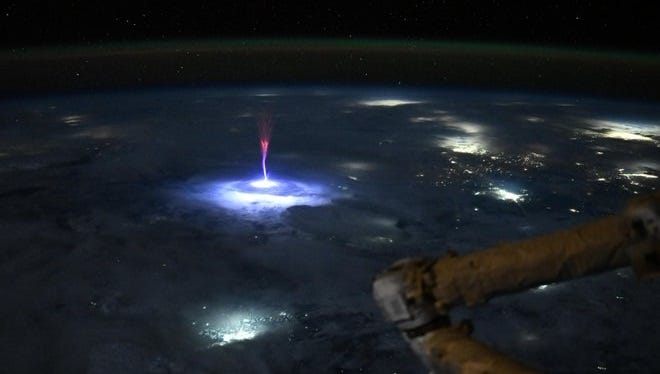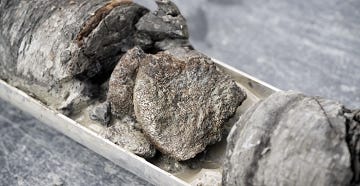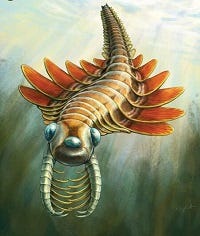Hello again, supporter of science,
Üdvözlet ismét, tudománypárti!
[Over 5,000 people in the Bay Area speak Hungarian at home.]
Show your support for science this Thursday (July 17) by joining one of the hundreds of “Good Trouble Lives On” protests. Thursday is the 5th anniversary of the passing of civil rights leader and Congressman John Lewis. He coined the term “Good Trouble” as the action of coming together to take peaceful, non-violent action to challenge injustice and create meaningful change. Find the location of a nearby protest at GoodTroubleLivesOn
I asked an AI about recent cuts to research in medicine and other sciences. Here is a summary:
- The National Institutes of Health budget faces a proposed 40% cut, potentially impacting thousands of grants and leading to a “brain drain” of researchers. Over 4,473 NIH grants are affected including research on sickle cell disease.
- The National Science Foundation has already cancelled over 1,600 grants, impacting research on topics such as COVID-19 biology and misinformation.
- Changes to federal funding for Medicaid and Medi-Cal (California’s program) are expected to significantly impact millions of Californians, potentially leading to a loss of coverage and increased uncompensated care costs. Additionally, cuts to provider taxes and payment caps will likely reduce hospital and physician payment rates.
CLIMATE
Our featured image above shows a ‘red sprite’ over Mexico on 3 July 2025. Although reports date back to the 1800’s, the first photo of a red sprite was taken in 1989. While lightning is a low-altitude hot electrical discharge, red sprites are a cold fluorescent discharge at extreme altitudes. The photo shows what might be a combination of the two.
Including excessive amounts of red meat in your diet is conclusively bad for your health. ¿But what about the health of our planet? Similarly, the production of red meat releases more greenhouse gases into the atmosphere than the production of comparable plant-based nutrition. Researchers at the Potsdam Institute for Climate Impact Research in Deutschland proposed taxing foods by their greenhouse emissions. The collected money would go to transitioning to a climate-friendly economy. Because they calculated lower income households would be hit hardest by this tax, dividends would be given to them to offset their contributions.
RAFFLE

We are offering it again. This coffee mug is disguised as a 450ml laboratory beaker that displays the chemical structure of caffeine. Just send an email before noon Friday to david.almandsmith [at] gmail.com with your guess of an integer between 0 and 1,000. Last time, Andrew guessed closest to the randomly-generated 383 to win an element clock.
MEDICINE / HEALTH
The highly pathogenic avian influenza H5N1 has infected 70 people in the U.S., but none since February. Because of this pause in infections, RFK Jr.’s distrust of mRNA vaccines, and costs associated with vaccine development, our government has halted the development of a vaccine for people.
The results of a very small study of Parkinson’s Disease (10 Parkinson’s patients and 14 age-matched controls) were published last week. The study revealed human pegivirus (HPgV) in the brains of 5 patients but in none of the controls. In addition, those 5 patients had the most severe symptoms. The results strongly suggest causation rather than simply association. Stay tuned!
PALEONTOLOGY
The Denver Museum of Nature and Science has dinosaurs on display, so it was just serendipitous that they dug up a dinosaur fossil under their parking lot. When they dug a bore hole 233 m deep to learn whether geothermal heating would be practical, they found the fossil in the core sample. Best guess: thescelosaurus vertebrae from 67.5 million years ago.
Using a new technique called liquid chromatography tandem mass spectrometry, researchers are now able to sequence peptides from fossil teeth that are millions of years old. Although the peptides are only portions of the original proteins, they provide enough information to deduce what full proteins they came from. The evolution of the proteins give paleontologists information helpful in tracking the evolution of the animal species.
A fossil of this 6cm Mosura fentoni was found in the Burgess Shale in Canada. Above is a reconstruction of this 3-eyed predator that had a circular mouth lined with teeth – sorta like a pencil sharpener. Living 500 million years ago, it is the earliest known creature with differentiated body segments. The fossil detailed how its heart circulated blood. It qualifies as our nightmare of the week.
THINGS TO DO THIS WEEK – My Picks
Sun and Earth: A Magnetic Connection Mon 7pm, Cal Academy of Science, S.F., $
Learning through Paddling Tues 7:45am, Marine Science Institute, Redwood City
Nerd Nite: Science of Solo Sex, The Princess Bride, & Photography Wed 8pm, S.F., $
After Dark: Exploring AI Thur 6 – 10pm, ExplOratorium, S.F., $
In Town Star Party Fri 9:30 – 11:30pm, San José
Bubblefest Sat 10am – 4pm, Chabot Space & Science Center, Oakland, $
Foothills Family Nature Walk, Sat 11am, Los Altos
Bubblefest Sun 10am – 4pm, Chabot Space & Science Center, Oakland, $
Tickets now on sale for SkeptiCal 2025 in Oakland on August 22nd. Ticket price goes up $25 on August 1.
BIOLOGY / ETHOLOGY
Orcas have been observed using tools; seaweed actually. Individuals in a pod of orcas off the coast of British Columbia tear off a piece of kelp (Nereocystis luetkeana) and rub it between themselves and another orca. [Video] Grooming? Skin care? Confirming relationships; Simply feels good? Based on previous observations, i’m guessing it simply feels good. [Video]
“Living” inside the above microscopic dinoflagellate (Citharistes regius) is Sukunaarchaeum mirabile, a previously unknown type of organism. Similar to viruses, it has its own genome and relies on its host to survive. Unlike viruses, however, Sukunaarchaeum mirabile has all the cellular machinery needed to duplicate its own genome. The genome itself identifies Sukunaarchaeum as an archaeon. Apparently the dinoflagellate provides Sukunaarchaeum’s metabolic needs. ¿Is it living? The distinction between life and non-life is a false dichotomy. It’s like asking how long a stretch of asphalt must be before we call it a road. We can decide on an answer, but it will be arbitrary. From simple autocatalytic chemical processes billions of years ago to today’s cheetahs has been an enormously branched continuum.
FUN NERDY VIDEOS
Laxative and the Chiropractor – Cup O’ Joe – Joe Schwarcz – 4 mins
Solar System Size Comparisons – Global Data – 5 mins
Antarctic Mystery Particles – Science News – Sabine Hossenfelder – 5.5 mins
Orcas Aren’t Just Messing with Yachts – Bizarre Beasts – Hank Green – 6.5 mins
Finding Alien Life – Big Think – David Kipping – 18.5 mins
ISS Q&A with K-3rd Pupils – NASA – Anne McClain & Nichole Ayers – 20.5 mins
Living on the Moon [Space Architecture] – Dami Lee, Architect – 23 mins
Silver – Tales from the Periodic Table – Ron Hipschmann – 32 mins
Wonderful World of Fungi – Deutsche Welle Documentary – 34 mins
Fixing the Media Landscape? – StarTalk – Neil deGrasse Tyson, Gary O’Reilly, Harleen Kaur – 36 mins
Dino Birds – PBS NOVA – 50 mins
Black Holes & Reality – Huge Conversations – Cleo Abram & Brian Cox – 74 mins
Demonstrate on Thursday, chat with a stranger, and practice empathy,
Dave Almandsmith, Bay Area Skeptics
“I call him free who is led solely by reason.”
— Baruch Spinoza (1632-1677) Dutch philosopher
“Confirmation bias is an underexplored source of renewable energy.”
— Sabine Hossenfelder (1976 – ) German theoretical physicist
Upcoming Events:
Click to see the next two weeks of events in your browser.






